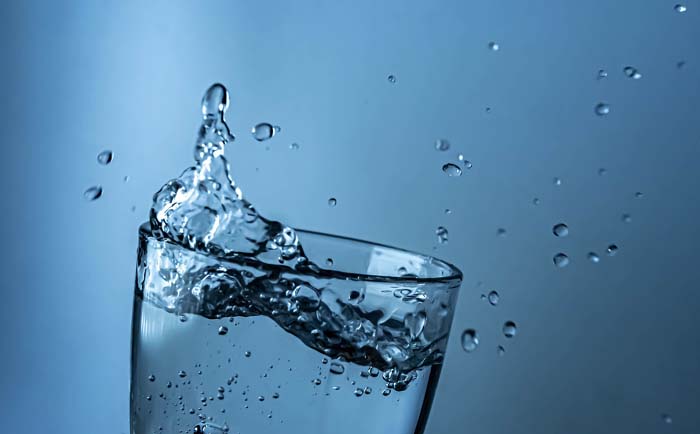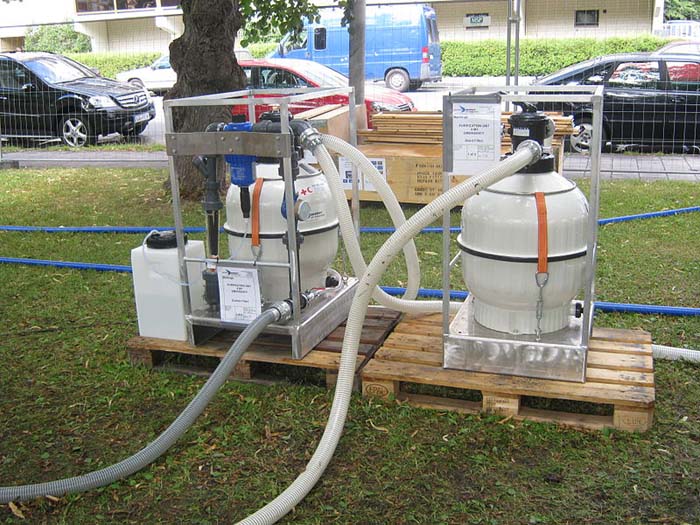
We rely on water filtration systems to keep our drinking water safe and clean. To guarantee that the water is fit for use and human consumption, these systems filter out pollutants, impurities, and other potentially dangerous things. Water filtration systems are available in various forms to meet the demands of diverse environments. This ranges from simple pitchers for use around the house to complex systems in large factories.
Water filtration systems‘ main goal is to improve water quality. They work by removing contaminants such as viruses, chemicals, particles, bacteria, and other contaminants. They are vital to protecting the public’s health. This is because they make sure people have access to safe drinking water and lessen the likelihood of waterborne infections.
Here’s how water filtration systems work.
The three stages of a filter
There are typically three stages to consider when thinking about filters:
- Input Stage
Here, the raw signal, or data, makes its way into the filter. At this stage, the filter receives the input, which could be physical phenomena like sound, digital data, or electrical signals. The input stage prepares the data for processing.
- Processing Stage
This is where the filtering process really happens, at its very core. This stage involves applying various physical or mathematical operations to the input data. This is to help achieve the desired filtering characteristics, which can be non-linear, linear, or digital, depending on the kind of filter. You can use simple thresholding, frequency domain transformations, or convolution, among other processes, for filtering.
- Output Stage
This step takes place after the filter processes the input data in order to obtain the output. Depending on the filter’s design, the output may be an amplified or attenuated version of the input data. It may also be a modified version of the input data, with specific frequencies changed. You could add more processing to the output step to enhance the filtered data or prepare it for analysis.
Any application requiring selective manipulation of data, such as data analysis or signal processing, can benefit from the three-stage structure that filters provide.
The order of filter media
Depending on the setup and desired filtration level, the order of filter media in a conventional water filtration system can vary. Nevertheless, the following is the typical order of filter media in a multi-stage water filtration system:
Sediment Filter
As a first step, this filters out big debris from the water, such as rust, sediment, and sand.
Activated carbon filter
This stage removes chlorine, organic compounds, and other chemicals that affect color, smell, and taste. VOCs and pesticides are just two of the toxins that activated carbon can help reduce.
Reverse Osmosis Membrane
As the water flows past a semipermeable membrane in a RO system, it molecularly removes heavy metals, dissolved particles, and other pollutants.
Post Carbon Filter
Occasionally, this stage is incorporated after the reverse osmosis membrane. This is to enhance the taste and remove any lingering smells from the water.
A number of factors, including manufacturer specifications, water quality, planned use, and water quality, might affect the precise arrangement and sequence of filter media. It is important to select a water purification system that can handle your specific water quality needs while also removing the pollutants in your supply.
Size of filter media material
Depending on the filtration system type and the particular application, the size of the filter media material might vary greatly. A variety of forms, including structured, powdered, granular, and fibrous materials, are available for filter media.
For instance, in water treatment, sand filters usually use media sizes between 0.2 and 2mm. On the other hand, multimedia filters may use a combination of sizes, from fine sand to coarse gravel, among others.
 When it comes to air filtration, the media’s size might change depending on the type of pollutants and the needed filtration effectiveness. Activated carbon granules come in a variety of particle sizes. They can also feature fibrous materials such as polyester or fiberglass.
When it comes to air filtration, the media’s size might change depending on the type of pollutants and the needed filtration effectiveness. Activated carbon granules come in a variety of particle sizes. They can also feature fibrous materials such as polyester or fiberglass.
The filter media material’s size depends on a number of elements. This includes the filtration system’s unique needs, the pollutants’ types and sizes, the desired filtration effectiveness, and the intended flow rate.
The factors affecting the rate of filtration
In the context of processes such as water treatment, there are several elements that can influence the rate of filtration in processes such as water treatment:
- Operating Conditions
The filtration rate can be influenced by various factors, including the frequency of system maintenance, the filtration’s duration, and the fluid’s flow rate.
- Surface area
The filtration rate is directly proportional to the surface area that is available for filtering. Filter membranes with larger surface areas can allow more substances or particles to pass through at once.
- Membrane material
The filter membrane’s material qualities can affect the rate of filtration. A higher rate of filtration may be possible with some materials due to their higher permeability.
- The filter’s pore size
The size of the pores determines what can pass through a filter membrane. The rate of filtration may increase with larger pores, although larger particles can also pass. On the other hand, smaller pores may cause filtration to be slower but more precise.
- Temperature
In general, the filtration rate improves at higher temperatures because of the increase in the particles’ kinetic energy. This causes them to flow through the filter more rapidly.
- Particle shape and size
Particles with a smaller size have an easier time passing through a filter. Similarly, particles with an unusual shape have a higher chance of clogging the filter and decreasing its filtration rate.
- Concentration gradient
The filtration rate may be higher at the outset if the particle concentration is higher on one side of the filter membrane than the other. However, the rate may decrease after achieving equilibrium.
- Presence of solutes
Solutes in the fluid can impact the filtration rate. Solutes can either enhance the filtering rate by reducing the effective pore size, clog the filter, or slow it down by raising the fluid viscosity.
- The fluid’s viscosity
The filtering rate is dependent on the fluid’s viscosity. The rate of filtration reduces when the viscosity of the fluid is higher because the fluid resists flow more.
- Pressure Gradient
Filtration typically occurs when there is a pressure difference across a filter or membrane. The filtration rate is directly proportional to the magnitude of the pressure gradient.
Understanding and adjusting these factors can optimize filtration procedures for efficiency in a variety of applications.
The fastest way to purify water
The available resources and the level of filtration required determine the fastest approach to purifying water. These are a few approaches:
Portable water filters
You can purify water properly using portable filters such as pump filters or straw filters. These filters remove parasites, bacteria, and some chemicals from the water. You’ll need the device itself, but it’s quick and simple.
Water Purification Tablets
For fast purification, these tablets are ideal. Iodine and chlorine dioxide are among the chemicals you can find in these tablets. They are effective against parasites, viruses, and bacteria. After waiting the prescribed amount of time, dissolve the tablet in water as directed.
Chemical Treatment
Chemicals such as iodine or chlorine bleach can help you treat water quickly. Because of the potential dangers of incorrect use, read and carefully follow the directions. You only need a few drops per liter, and you might have to wait half an hour to an hour before you can drink it.
Ultraviolet Water Purification
One way to disinfect water is with an ultraviolet purifier, which uses UV light to kill viruses, bacteria, and other pathogens. Despite its speed, it necessitates an ultraviolet purifier, which may not always be accessible.
Boiling
The rapid and efficient killing of parasites, viruses, and bacteria is possible via boiling water. To make sure the water is safe to drink, boil it for at least one minute.
Always check if the water is safe for drinking, even if you’re in a hurry. In order to keep contaminants at bay, it is vital that you adhere to each purification procedure’s recommended guidelines.
How to know if my water filter is working
If you care about the quality of the water you drink, you must check that your water filter is doing its job. If your water filter isn’t doing its job, try these steps:
- Expert testing
You can also use an expert water testing service if you aren’t sure how well your water filter is working. They can do thorough tests to find out how good your filtered water is.
- Inspect water quality before and after
With a water testing kit, you can check the water’s quality both before and after filtering it. This will be useful for comparing the pre- and post-filtration levels of contaminants such as bacteria, heavy metals, or chlorine.
- Smell and taste
Inspect the filtered water for odor and taste. It could be an indication that the filter is failing to remove pollutants adequately if it has an unusual smell or taste. Clean and fresh water should not have any odor or taste.
- Visual checkup
Check the water filter’s physical condition on a frequent basis. Inspect the system for signs of clogging, leaks, or damage. It could be time to replace or maintain the filter if you see any problems.
- Flow rate
Make note of how fast water is flowing out of the filter. It may be necessary to replace or clean the filter if the flow rate drops significantly.
- Monitor filter lifespan
Water filters typically have a recommended use capacity or lifespan. Count the amount of water that has passed through the filter since its installation, and record the date. Follow the manufacturer’s instructions to replace the filter.
- Read the manual
Before you do anything else, make sure you read the directions that came with your water filter. In the manual, you can usually find instructions for testing and maintaining your filter. Follow these steps to check if your water filter is doing its job and giving you safe water to drink.
Conclusion
The significance of water filtration systems in guaranteeing access to safe and clean water is becoming more and more apparent as worries about water scarcity and pollution grow. Supporting sustainable development and public health efforts is greatly aided by these systems. This relies on their implementation in large-scale infrastructure projects or at the household level globally.
